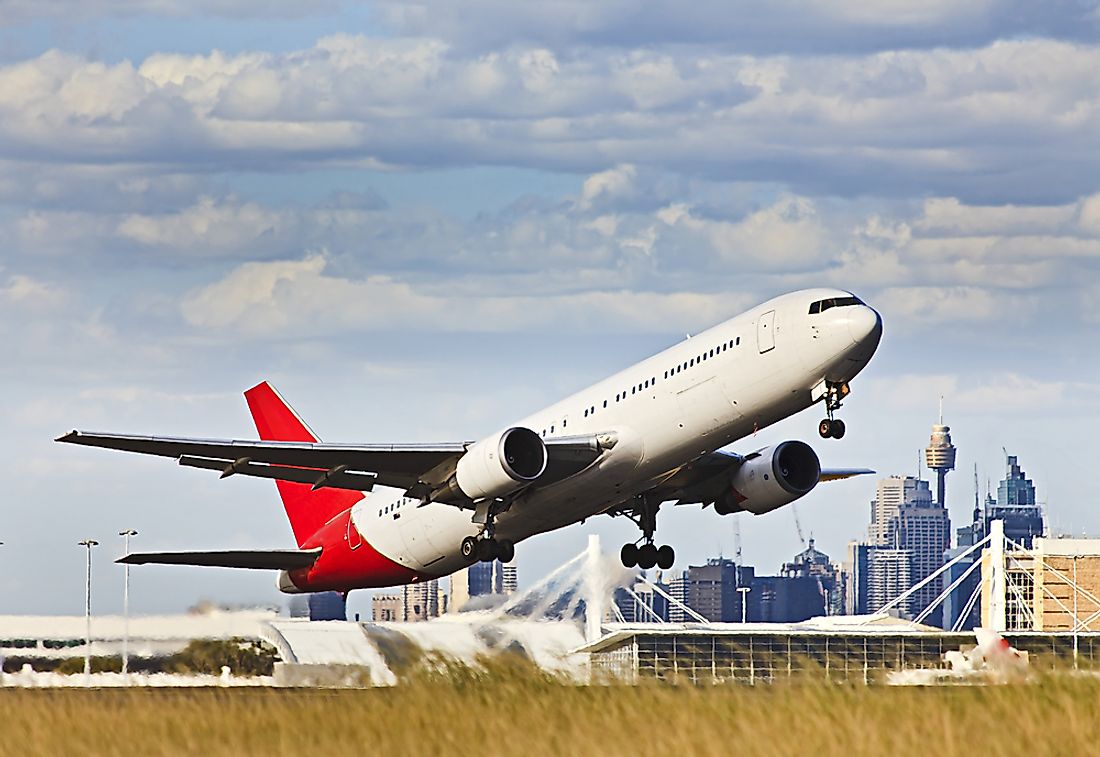The Busiest Airports Of Australia

Australia has the busiest airports in Oceania and among the busiest in the world in terms of air traffic. The country has over 600 airports spread out across the vast landscape. Some of the busiest airports in the country are Sydney, Melbourne, Brisbane, and Perth.
The Four Busiest Australian Airports
1. Sydney Airport
Sydney Airport, locally known as Mascot Airport or Kingsford Smith Airport, is Australia’s busiest airport. It is located in the Mascot Suburb, 5 miles from Sydney city center. The land on which the airport is built was leased by a wartime pilot - Nigel Love- who flew the first plane from Mascot in 1919. Australian government acquired the land from Nigel in 1923 and built the first gravel runway in 1933. By 1949, Sydney Airport had three runways. In early 2000, the airport was refurbished in readiness for the 2000 Olympic Games in Sydney. Other expansion projects are continually carried out at the airport. The busy airport handled close to 42 million passengers in 2016. It is estimated that by 2030, the passenger traffic will have shot to 85 million per annum. Sydney airport is well connected to a wide range of transport networks that lead to the city. The network includes an underground railway line, road connections and bicycle paths.
2. Melbourne Airport
Melbourne Airport is Australia’s second-busiest airport. It is colloquially referred to as Tullamarine Airport due to its proximity to the Tullamarine suburb. The airport was established to replace Essendon Airport in 1959. Melbourne airport began international operations in 1970. In a privatization drive in 1997, the Australian government handed control of Melbourne airport to Australia Pacific Airports Corporation Limited at the cost of $1.3 billion. Melbourne Airport operates 24 hours a day and handles more than 33 million passengers per year. The airport is 14 miles from Melbourne city center. It is linked to the city by the Tullamarine freeway. Besides, local bus services provided travelers easy access to the city. There is no railway line connecting the airport to the city, but plans are underway to construct one.
3. Brisbane Airport
Brisbane is the third busiest airport in Australia. It was constructed by the Federal government of Australia in 1988. The airport was built in Cribb Island, a residential area in Brisbane which was demolished to create space for the airport. At the start of operation, the airport facilities included; a domestic terminal, two runways, access roads, and an air traffic control tower. Control of the airport was transferred from the Federal government to Brisbane Airport Corporation in 1997 at the cost of $1.4 billion. Passengers using the airport hit the 22 million mark in 2015. The number is projected to grow up to 50 million passengers per year by 2035. Brisbane airport has two railway stations which are operated by a private corporation- Airtrain consortium. The airport is linked to a robust road network and bicycle paths that travelers use to access the city of Brisbane and other parts of Australia. The airport has won many awards including Australia’s best airport in terms of excellent service for ten consecutive years (2005-2014).
4. Perth Airport
Perth Airport is Australia’s fourth busiest airport. Initially, the area was a basic airfield used for military operations in the Second World War. It was known as the Guildford Aerodrome. In 1952, the airport gained international status and was renamed Perth International Airport. The airport has four main terminals, one minor terminal, and two runways. The airport’s railway line link is under construction. Further development of the airport’s infrastructure is underway. Perth Airport has experienced robust growth in passenger numbers since the turn of the 21st century. In 2015, approximately 12.7 million passengers used the airport up from 5.1 million passengers in 2001.
Future Trends
Australian airports handle numerous passengers and record huge volumes of cargo daily. Most of the Australian airports are privately owned and operated. Due to the increasing demand on airport facilities, the airports regularly undertake expansion projects to accommodate the growing demand.
The Busiest Airports Of Australia
| Rank | Airport | Location | IATA | 2015-16 |
|---|---|---|---|---|
| 1 | Sydney Airport | Sydney, New South Wales | SYD | 41,091 |
| 2 | Melbourne Airport | Melbourne, Victoria | MEL | 33,705 |
| 3 | Brisbane Airport | Brisbane, Queensland | BNE | 22,320 |
| 4 | Perth Airport | Perth, Western Australia | PER | 12,558 |
| 5 | Adelaide Airport | Adelaide, South Australia | ADL | 7,778 |
| 6 | Gold Coast Airport | Gold Coast, Queensland | OOL | 6,273 |
| 7 | Cairns Airport | Cairns, Queensland | CNS | 4,711 |
| 8 | Canberra Airport | Canberra, Australian Capital Territory | CBR | 2,815 |
| 9 | Hobart International Airport | Hobart, Tasmania | HBA | 2,313 |
| 10 | Darwin International Airport | Darwin, Northern Territory | DRW | 2,041 |











